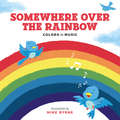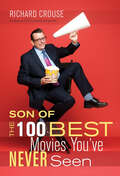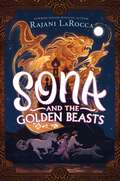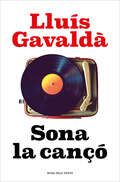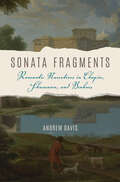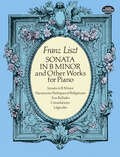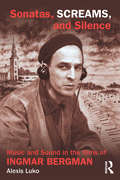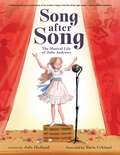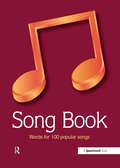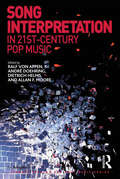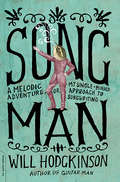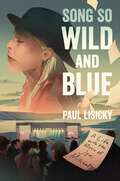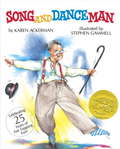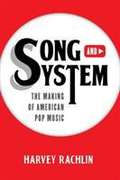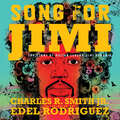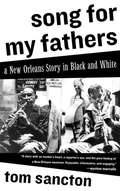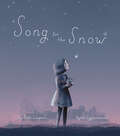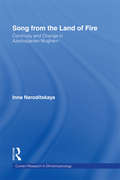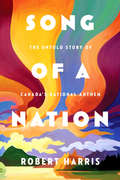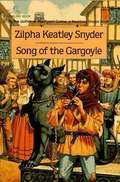- Table View
- List View
Something to Say
by Lily Prince Richard Klin"Klin is an insightful interviewer and a marvelous writer. We were delighted to have the opportunity to publish the interview with Howard Zinn from Something to Say."-The Bloomsbury ReviewThe fusion of art and politics is axiomatic in much of the world. In America, their relationship is erratic. What is art in the service of social justice? Is an artist obligated to address the political? This book profiles, in words and photos, disparate creative forces who offer thoughts on their point of engagement with the political sphere. In the words of Pete Seeger, art "may save the world. Visual arts, dancing, acting arts, cooking arts. . . . Joe DiMaggio reaching for a fly ball-that was great dancing!"Profiles in Something to Say:The late Howard ZinnPete SeegerYoko OnoScreenwriter Ron NyswanerPalestinian American standup comedian Maysoon ZayidPoet Quincy TroupeDominican American painter Freddy RodríguezFilmmaker Gini RetickerSlowpoke cartoonist Jen SorensenPerformance and installation artist Sheryl OringChildren's writer Jacqueline WoodsonChef and food activist Didi EmmonsChinese American poet and art critic John YauPunk-rock activist Franklin Stein of the band BlowbackKlezmer fiddler Alicia SvigalsRichard Klin's writing has appeared in the Brooklyn Rail, Forward, The Bloomsbury Review, Parabola, The Rambler, and other media.Lily Prince has exhibited in over fifty national and international exhibitions and has been awarded commissions by numerous hotels and the NYC Department of Cultural Affairs. She is an associate professor of art at William Paterson University. Her work has appeared in The New York Times, New York Magazine, Newark Star-Ledger, New American Paintings, San Francisco Weekly, and other media.
Somewhere Over the Rainbow: Colors in Music
by Running Press Mike ByrneA whimsical color concept board book that shares a some fun pop music history while teaching children all the colors of the rainbow.Preschoolers learning to identify colors will love this whimsical book, while music-savvy parents will love the artistic representation of some of their favorite song titles, including Little RED Corvette, BLUE Suede Shoes, and PINK Moon, just to name a few.
Son of the 100 Best Movies You've Never Seen
by Richard CrouseFans of offbeat cinema, discriminating renters and collectors, and movie buffs will drool over this checklist of the best overlooked and underappreciated films of the last hundred years. In Son of the 100 Best Movies You&’ve Never Seen, Richard Crouse, Canada AM film critic and host of television&’s award-winning Reel to Real, presents a follow-up to his 2003 book with another hundred of his favorite films.Titles range from the obscure, like 1912&’s The Cameraman&’s Revenge, to El Topo&’s unusual existential remake of the classic western, and little-seen classics like The Killing. Each essay features a detailed description of plot, notable trivia tidbits, critical reviews, and interviews with actors and filmmakers. Featured interviews include Billy Bob Thornton on an inspirational movie about a man with his head in the clouds, Francis Ford Coppola on One from the Heart, and Mario Van Peebles on playing his own father in Badasssss!Sidebars feature quirky details, including legal disclaimers and memorable quotes, along with movie picks from A-list actors and directors.
Sona and the Golden Beasts
by Rajani LaRoccaFrom Newbery Honor and Walter Award–winning author Rajani LaRocca comes a gripping middle grade fantasy perfect for fans of The Serpent’s Secret and The Last Mapmaker. Though music is outlawed in the land of Devia, Sona hears it everywhere. Sona is a Malech, a member of the ruling class that conquered Devia centuries ago. Malechs forbade music to prevent the native Devans from using their magic, and Sona hides her abilities lest they put her in danger.Then Sona discovers an orphaned wolf pup. She believes the pup, with its golden ears, might be related to one of the five sacred beasts of Devia, and she vows to keep it safe. That means bringing the pup in tow when Sona embarks on a perilous quest, along with a Devan boy, to secure the nectar of life for a loved one who has fallen gravely ill. On the journey, as Sona uncovers secrets about the Malechian empire and her own identity, she realizes that the fate of the sacred beasts, and the future of Devia, just might come down to her.This captivating fantasy novel by award-winning author Rajani LaRocca will sweep readers into Sona’s quest across the land of Devia as she grapples with the lasting impact of colonial rule and learns to fight for what she knows is right.
Sona la cançó
by Lluís GavaldàSona la cançó és una carta d'amor al poder evocador de les cançons, un llibre que emocionarà tots els que en algun moment de la nostra vida ens hem enamorat d'una melodia o d'una lletra. Des dels Beatles fins a David Bowie, passant per Bob Dylan i Bruce Springsteen, Lluís Gavaldà recull en aquest llibre la seixantena de cançons que han marcat la seva vida, aquelles que l'han fet plorar i riure, i també les que li hauria agradat compondre ell mateix. L'autor ens ho explica amb la cura i la delicadesa del qui s'ha nodrit de música des de ben petit. I és que aquest no és únicament un llibre per a melòmans, és també una declaració d'amor a la vida i un viatge sentimental escrit amb un estil extraordinàriament personal, capaç de ser divertit, tendre i apassionat al mateix temps.
Sonata Fragments: Romantic Narratives in Chopin, Schumann, and Brahms
by Andrew Davis“An effort to expand sonata theory more solidly into the nineteenth-century repertoire.” —NotesIn Sonata Fragments, Andrew Davis argues that the Romantic sonata is firmly rooted, both formally and expressively, in its Classical forebears, using Classical conventions in order to convey a broad constellation of Romantic aesthetic values. This claim runs contrary to conventional theories of the Romantic sonata that place this nineteenth-century musical form squarely outside inherited Classical sonata procedures.Building on Sonata Theory, Davis examines moments of fracture and fragmentation that disrupt the cohesive and linear temporality in piano sonatas by Chopin, Brahms, and Schumann. These disruptions in the sonata form are a narrative technique that signify temporal shifts during which we move from the outer action to the inner thoughts of a musical agent, or we move from the story as it unfolds to a flashback or flash-forward. Through an interpretation of Romantic sonatas as temporally multi-dimensional works in which portions of the music in any given piece can lie inside or outside of what Sonata Theory would define as the sonata-space proper, Davis reads into these ruptures a narrative of expressive features that mark these sonatas as uniquely Romantic.“A major achievement.” —Michael L. Klein, author of Music and the Crises of the Modern Subject
Sonata in B Minor and Other Works for Piano (Dover Classical Piano Music)
by Franz LisztAmong Franz Liszt's many brilliant compositions for piano, few have been so admired and performed as the Sonata in B Minor, long considered one of the greatest piano compositions of the 19th century. A work of consummate structural ingenuity, it combines and transforms four distinctive themes in one long movement, in the free, rhapsodic development characteristic of the symphonic poem.A great favorite of pianists and their audiences, this piano masterpiece is reprinted here from the authoritative Franz Liszt-Stiftung edition published by Breitkopf & Härtel. Included with it are a number of other well-known Liszt compositions. Among these are the six beautiful pieces entitled Consolations; all ten works in the Harmonies poétiques et religieuses, including the popular "Funérailles"; the two Ballades, larger-scale works which require considerable technical prowess; and the two Légendes, "The Sermon to the Birds of St. Francis of Assisi" and "St. Francis of Paola Walking on the Waves."
Sonata: A Memoir Of Pain And The Piano
by Andrea AveryA rich and vibrant memoir that weaves chronic illness and classical music into a raw and inspiring tale of grace and determination. Andrea Avery, already a promising and ambitious classical pianist at twelve, was diagnosed with a severe case of rheumatoid arthritis (RA) that threatened not just her musical aspirations but her ability to live a normal life. As Andrea navigates the pain and frustration of coping with RA alongside the usual travails of puberty, college, sex, and just growing-up, she turns to music?specifically Franz Schubert's sonata in B-flat D960, and the one-armed pianist Paul Wittgenstein for strength and inspiration. The heartbreaking story of this mysterious sonata—Schubert’s last, and his most elusive and haunting—is the soundtrack of Andrea's story. Sonata is a breathtaking exploration of a “Janus-head miracle”—Andrea's extraordinary talent and even more extraordinary illness. With no cure for her R.A. possible, Andrea must learn to live with this disease while not letting it define her, even though it leaves its mark on everything around her—family, relationships, even the clothes she wears. And in this riveting account, she never loses her wit, humor, or the raw artistry of a true performer. As the goshawk becomes a source of both devotion and frustration for Helen Macdonald in H is for Hawk, so the piano comes to represent both struggle and salvation for Andrea in her extraordinary debut.
Sonatas, Screams, and Silence: Music and Sound in the Films of Ingmar Bergman
by Alexis LukoSonatas, Screams, and Silence: Music and Sound in the Films of Ingmar Bergman is the first musical examination of Bergman’s style as an auteur filmmaker. It provides a comprehensive examination of all three aspects (music, sound effects, and voice) of Bergman’s signature soundtrack-style. Through examinations of Bergman’s biographical links to music, the role of music, sound effects, silence, and voice, and Bergman’s working methods with sound technicians, mixers, and editors, this book argues that Bergman’s soundtracks are as superbly developed as his psychological narratives and breathtaking cinematography. Interdisciplinary in nature, this book bridges the fields of music, sound, and film.
Song & Self: A Singer's Reflections on Music and Performance (Berlin Family Lectures)
by Ian BostridgeAward-winning singer Ian Bostridge examines iconic works of Western classical music to reflect on the relationship between performer and audience. Like so many performers, renowned tenor Ian Bostridge spent much of 2020 and 2021 unable to take part in live music. The enforced silence of the pandemic led him to question an identity that was previously defined by communicating directly with audiences in opera houses and concert halls. It also allowed him to delve deeper into many of the classical works he has encountered over the course of his career, such as Claudio Monteverdi’s seventeenth-century masterpiece Il Combattimento di Tancredi e Clorinda and Robert Schumann’s popular song cycle Frauenliebe und Leben. In lucid and compelling prose, Bostridge explores the ways Monteverdi, Schumann, and Britten employed and disrupted gender roles in their music; questions colonial power and hierarchy in Ravel’s Songs of Madagascar; and surveys Britten’s reckoning with death in works from the War Requiem to his final opera, Death in Venice. As a performer reconciling his own identity and that of the musical text he delivers on stage, Bostridge unravels the complex history of each piece of music, showing how today’s performers can embody that complexity for their audiences. As readers become privy to Bostridge’s unique lines of inquiry, they are also primed for the searching intensity of his interpretations, in which the uncanny melding of song and self brings about moments of epiphany for both the singer and his audience.
Song After Song: The Musical Life of Julie Andrews
by Julie HedlundThis picture book biography explores the early life of film star, theater performer, singer, and published author of children's books Julie Andrews, and how she found her voice and her love of music.Long before she starred in movies like The Sound of Music, Mary Poppins, and The Princess Diaries, Julie Andrews was a little girl struggling with her parents' divorce and the ravages of World War II. To comfort her and fill her time during the London Blitz, her stepfather taught her to sing, and Julie found her voice-one of the most extraordinary singing voices of all time.Lyrically told by Julie Hedlund and lushly illustrated by Ilaria Urbinati, this is the story of how Julie Andrews became one of the world's most beloved performers.
Song Book: Words for 100 Popular Songs
by Ffion Mercer Speechmark SpeechmarkFeaturing large clear print, the "Song Book" contains the words to 100 popular songs that are ideal for group sing-along sessions. The book is divided into six sections: traditional folk songs, choruses from old time variety, songs from World War II, post-war evergreens, hymns, and Christmas songs.
Song Interpretation in 21st-Century Pop Music (Ashgate Popular and Folk Music Series)
by Allan Moore André Doehring Ralf AppenExisting books on the analysis of popular music focus on theory and methodology, and normally discuss parts of songs briefly as examples. The impression often given is that songs are being chosen simply to illuminate and exemplify a theoretical position. In this book the obverse is true: songs take centre stage and are given priority. The authors analyse and interpret them intensively from a variety of theoretical positions that illuminate the song. Thus, methods and theories have to prove their use value in the face of a heterogeneous, contemporary repertoire. The book brings together researchers from very different cultural backgrounds and encourages them to compare their different hearings and to discuss the ways in which they make sense of specific songs. All songs analysed are from the new millennium, most of them not older than three years. Because the most widely popular styles are too often ignored by academics, this book aims to shed light on how million sellers work musically. Therefore, it encompasses a broad palette, highlighting mainstream pop (Lady Gaga, Ke$ha, Lucenzo, Amy McDonald), but also accounting for critically acclaimed ’indie’ styles (Fleet Foxes, Death Cab for Cutie, PJ Harvey), R&B (Destiny’s Child, Janelle Monae), popular hard rock (Kings of Leon, Rammstein), and current electronic music (Andrés, Björk). By concentrating on 13 well-known songs, this book offers some model analyses that can very easily be studied at home or used in seminars and classrooms for students of popular music at all academic levels.
Song Man: A Melodic Adventure, or, My Single-minded Approach to Songwriting
by Will HodgkinsonSong man is the endearing sequel to Will Hodgkinson’sGuitar Man, wherein our hero, having learned to play guitar (badly) in six months, endeavors to unlock the process of songwriting and ultimately record a single. Featuring pithy, humorous, and illuminating one-on-one songwriting lessons with Keith Richards of the Rolling Stones, Ray Davies of the Kinks, Andy Partridge of XTC, Arthur Lee of Love, Chan Marshall of Cat Power, Bob Stanley of Saint Etienne, Gruff Rhys of Super Furry Animals, and a host of others who run the gamut from unknown muses to cult icons to superstars-including Hodgkinson’s lovable crew of ne’er-do-wells first introduced inGuitar Man-Song Manis at once an investigation into the most ephemeral of arts and a highly readable journey of discovery.
Song Means: Analysing And Interpreting Recorded Popular Song (Ashgate Popular and Folk Music Series)
by Allan F. MooreThe musicological study of popular music has developed, particularly over the past twenty years, into an established aspect of the discipline. The academic community is now well placed to discuss exactly what is going on in any example of popular music and the theoretical foundation for such analytical work has also been laid, although there is as yet no general agreement over all the details of popular music theory. However, this focus on the what of musical detail has left largely untouched the larger question - so what? What are the consequences of such theorization and analysis? Scholars from outside musicology have often argued that too close a focus on musicological detail has left untouched what they consider to be more urgent questions related to reception and meaning. Scholars from inside musicology have responded by importing into musicological discussion various aspects of cultural theory. It is in that tradition that this book lies, although its focus is slightly different. What is missing from the field, at present, is a coherent development of the what into the so what of music theory and analysis into questions of interpretation and hermeneutics. It is that fundamental gap that this book seeks to fill. Allan F. Moore presents a study of recorded popular song, from the recordings of the 1920s through to the present day. Analysis and interpretation are treated as separable but interdependent approaches to song. Analytical theory is revisited, covering conventional domains such as harmony, melody and rhythm, but does not privilege these at the expense of domains such as texture, the soundbox, vocal tone, and lyrics. These latter areas are highly significant in the experience of many listeners, but are frequently ignored or poorly treated in analytical work. Moore continues by developing a range of hermeneutic strategies largely drawn from outside the field (strategies originating, in the most part, within psychology and philosophy) but still deeply r
Song So Wild and Blue: A Life with the Music of Joni Mitchell
by Paul LisickyFrom the celebrated novelist and memoirist, a gorgeous account of how Joni Mitchell’s work has shaped his writing throughout his life.From the moment Paul Lisicky heard Joni Mitchell while growing up in New Jersey, he recognized she was that rarity among musicians—a talent whose combination of introspection, liberation, and deep musicality set her apart from any other artist of the time. As a young man, Paul was a budding songwriter who took his cues from Mitchell’s mysteries and idiosyncrasies. But as he matured, he set his guitar aside and turned to prose, a practice that would eventually take him to the Iowa Writers’ Workshop and into the professional world of letters.As the decades passed, Paul’s connection to Mitchell’s artistry only deepened. Joni’s music was a constant, a guide to life and an artist’s manual in one. As Paul navigated love and heartbreak and imaginative struggles and the vicissitudes of a creative career, he would return again and again to the lessons found in Joni’s songs, to the solace and challenges that only her musicianship could give.Song So Wild and Blue is a gorgeously written, beautifully intimate, and unique tribute to the woman who shaped generations of creators and thinkers. Lisicky offers his own coming-of-adulthood as testimony to the power of songwriting and staying true to your creative vision. A guide to life that is part memoir, part biography, and part homage, Song So Wild and Blue is a joy for devoted Joni enthusiasts, budding writers, and artists of all stripes.
Song Walking: Women, Music, and Environmental Justice in an African Borderland (Chicago Studies in Ethnomusicology)
by Angela ImpeySong Walking explores the politics of land, its position in memories, and its foundation in changing land-use practices in western Maputaland, a borderland region situated at the juncture of South Africa, Mozambique, and Swaziland. Angela Impey investigates contrasting accounts of this little-known geopolitical triangle, offsetting textual histories with the memories of a group of elderly women whose songs and everyday practices narrativize a century of borderland dynamics. Drawing evidence from women’s walking songs (amaculo manihamba)—once performed while traversing vast distances to the accompaniment of the European mouth-harp (isitweletwele)—she uncovers the manifold impacts of internationally-driven transboundary environmental conservation on land, livelihoods, and local senses of place. This book links ethnomusicological research to larger themes of international development, environmental conservation, gender, and local economic access to resources. By demonstrating that development processes are essentially cultural processes and revealing how music fits within this frame, Song Walking testifies to the affective, spatial, and economic dimensions of place, while contributing to a more inclusive and culturally apposite alignment between land and environmental policies and local needs and practices.
Song and Dance Man: (Caldecott Medal Winner)
by Karen Ackerman Stephen GammellWhen his grandchildren follow Grandpa up the attic stairs, a dazzling show, better than any on TV, is about to begin! Grandpa opens a dusty trunk, pulls out bowler hat and gold-tipped cane, and suddenly we are back in the good old days, the song and dance days. The lights are twinkling, and a vaudeville man is doing the first slippery steps of the old soft shoe. So sit right back and enjoy the show as Karen Ackerman and Stephen Gammell's warm, wondrous Grandpa brings new life to days gone by.
Song and System: The Making of American Pop Music
by Harvey RachlinFrom the first Tin Pan Alley tunes to today’s million-view streaming hits, pop songs have been supported and influenced by an increasingly complex industry that feeds audience demand for its ever-evolving supply of hits. Harvey Rachlin investigates how music entered American homes and established a cultural institution that would expand throughout the decades to become a multibillion dollar industry, weaving a history of the evolution of pop music in tandem with the music business. Exploding in the 1950s and ’60s with pop stars like Elvis and the Beatles, the music industry used new technologies like television to promote live shows and record releases. More recently, the development of online streaming services has forced the music industry to cultivate new promotion, distribution, copyright, and profit strategies. Pop music and its business have defined our shared cultural history. Song and System: The Making of American Pop Music not only charts the music that we all know and love but also reveals our active participation in its development throughout generations.
Song for Jimi: The Story of Guitar Legend Jimi Hendrix
by Charles R. SmithJimi Hendrix's talent was epic, and so is this lyrical account of his life, with spectacular artwork by Edel Rodriguez-- including a poster underneath the jacket!From his turbulent childhood through his epical appearance at the Monterey and Woodstock festivals, Charles R. Smith Jr. covers it all in this rich and rhythmic account of a singular life, accompanied by the psychedelic splendor of Edel Rodriguez's acid-tinged artwork. Let me tell you a story,a story 'bout a boy,who became a man,a git-tar man,named Jimi.Written as a series of verses beginning with intro and ending with outro, this unique mix of rhythm and rhyme captures the essence of rock icon Jimi Hendrix and his struggle to live life on his own terms. Backmatter, including a select discography, timeline of Hendrix's life, and a personal essay from the author, is included. A Kirkus Reviews Best Picture Book of the YearA CBC/NCSS Notable Social Studies Trade BookA CSMCL Best Multicultural Children's Book of the YearAn Evanston Public Library Great Books for Kids pick!
Song for my Fathers
by Tom SanctonSong for My Fathers is the story of a young white boy driven by aconsuming passion to learn the music and ways of a group of agingblack jazzmen in the twilight years of the segregation era.Contemporaries of Louis Armstrong, most of them had played in localobscurity until Preservation Hall launched a nationwide revival ofinterest in traditional jazz. They called themselves "the mens." Andthey welcomed the young apprentice into their ranks. The boy was introduced into this remarkable fellowship by hisfather, an eccentric Southern liberal and failed novelist whose powerfularticles on race had made him one of the most effective polemicistsof the early Civil Rights movement. Nurtured on his father's belief inracial equality, the aspiring clarinetist embraced the old musicianswith a boundless love and admiration. The narrative unfolds againstthe vivid backdrop of New Orleans in the 1950s and '60s. But thatmagical place is more than decor; it is perhaps the central player, forthis story could not have taken place in any other city in the world.
Song for the Snow
by Jon-Erik LappanoCan a long-forgotten song bring the snow back to Freya’s town? A lyrical fable from award-winning creators Jon-Erik Lappano and Byron Eggenschwiler. Freya has always loved the snow and the way it covers everything like powdered sugar. But the snow hasn’t come to her town for two winters, and she’s starting to forget what it looks and feels like. When will it be cold? When will it snow again? One day Freya finds a snow globe at the market. It plays the melody of a song that the townspeople sang for generations to call the snow home. Freya’s own grandmother used to sing it to her mother on cold winter nights. Every morning, Freya takes the snow globe outside and sings the song, but still there is no snow … until she has the idea to share the song. Soon everyone in town is singing it, and then, early one morning, the winds change. Jon-Erik Lappano and Byron Eggenschwiler have created an eloquent fable about remembering past traditions, our connection to nature and caring for a world threatened by climate change through shared effort and hope. Correlates to the Common Core State Standards in English Language Arts: CCSS.ELA-LITERACY.RL.K.1 With prompting and support, ask and answer questions about key details in a text. CCSS.ELA-LITERACY.RL.1.2 Retell stories, including key details, and demonstrate understanding of their central message or lesson. CCSS.ELA-LITERACY.RL.1.4 Identify words and phrases in stories or poems that suggest feelings or appeal to the senses. CCSS.ELA-LITERACY.RL.1.7 Use illustrations and details in a story to describe its characters, setting, or events.
Song from the Land of Fire: Azerbaijanian Mugam in the Soviet and Post-Soviet Periods (Current Research In Ethnomusicology: Outstanding Dissertations Ser. #6)
by Inna NaroditskayaSong from the Land of Fire explores Azerbaijanian musical culture, a subject previously unexamined by American and European scholars. This book contains notations of mugham performance--a fusion of traditional poetry and musical improvisation--and analysis of hybrid genres, such as mugham-operas and symphonic mugham by native composers. Intimately
Song of a Nation: The Untold Story of Canada's National Anthem
by Robert HarrisThe greatest story never told, this formidable and gorgeously written biography documents the amazing and controversial short life of Calixa Lavallée--the composer of "O Canada"--and the tumult of 19th-century North America.He was a composer, a performer, an entrepreneur, and an educator; played pop and classical music; and appeared in his quasi-colonial society, tragically, just ahead of his time. Calixa Lavallee, the French Canadian composer of "O Canada," has a compelling, almost unbelievable personal story. He left home at 12 and worked as a blackface minstrel, travelling throughout the United States for more than a decade; he fought and was injured in the American Civil War in perhaps the most important battle of that war, at Antietam Creek; performed for President Lincoln several times; produced the first opera in Quebec and wrote two of his own; became a leading figure in American music education, representing American music in London; journeyed to Paris to study for two years; tried and failed to create a Quebec national conservatory. And he wrote our national anthem. But Lavallée also represents all the contradictions and confusions of Canadian identity as our country came together in the last half of the nineteenth century. To understand "O Canada," and to understand the man who wrote it, is to return to the Canada of the mid-nineteenth century, a Canada just forming as a nation, bringing together ancient racial hatreds and novel political possibilities, as culture faced culture, religion faced religion, economy faced economy. Calixa Lavallée is the most famous Canadian you have never heard of, living a life and ultimately composing a song that stands the test of time.
Song of the Gargoyle
by Zilpha Keatley SnyderA strange sound awakens thirteen-year-old Tymmonin in the dead of night. In a blink of an eye his father, the court jester of Austerneve, is mysteriously kidnapped and the terrified boy must slip away secretly to avoid capture himself.

